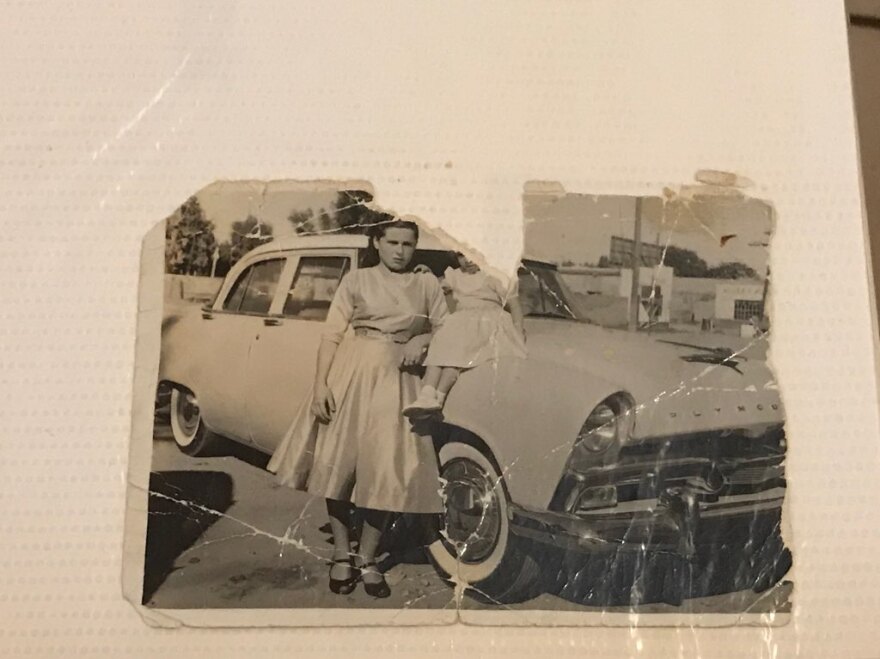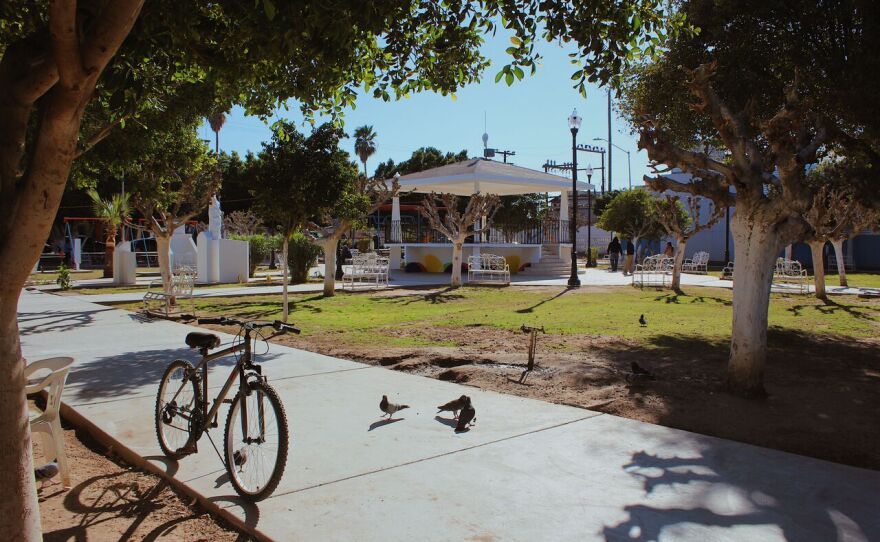President Donald Trump has made it clear that he wants to build a massive wall on the U.S. Mexico border. Critics say the fence is useless and a waste of taxpayer money.
But that may depend on which side of the border you live on.
KAWC’s Stephanie Sanchez has lived in this border community her entire life. She shares personal recollections in today’s reporter’s notebook.
I have been crossing the U.S.-Mexico border my whole life. I grew up in Yuma, Arizona but my grandmother, Maria Antonia Avendaño Bazua, lived just across the border in the small town of Los Algodones.
She is 83 years old and was born in Sinaloa, Mexico. As a young woman, she made bread and raspados, or flavored shaved ice to make a living.
She moved to Algodones in 1957 to look for better work.
She got a job cleaning rooms at a hotel and later married the owner, my grandfather, Jose Felix Beltran. They had 11 kids and settled in a house on a quiet street in Algodones, near the U.S. Mexico border.
She says there was no border fence. No wall. Nothing.
It was that way for years, long after my grandfather died and my grandmother’s house became the weekly gathering place.
My cousins and I would spend the whole weekend at nana’s house. It was the 1990s.
Crossing the border then was different for U.S. citizens like me. I just told them I was an American.
My nana says she knew the customs officers at the Andrade port of entry.
She says they were nice, they rarely questioned anyone and would let the kids go back and forth to an American market near the border.
My cousins and I would play treasure hunting games and hunt dragonflies in an open desert field nearby.
We knew it was the U.S.-Mexico border but there was no marker. Although occasionally a U.S. Border patrol agent would appear, tall and dressed in green, and he’d shoo us back toward the Mexico side if we strayed too far north.
Sometimes we’d see people with suitcases get off busses that would stop on the corner near my nana's house. As we ate papitas on nana's porch, we didn’t think anything about it or that they were doing anything illegal, or wrong, as we watched them walk north into the United States.
My nana knew. But she says they never bothered her then.
She says they were nice and respectful and sometimes they ask for food or water.
But things would change on nana's street after 9/11. She doesn’t know exactly when a chain-link fence first appeared on the border.
She says it was a thin wire mesh and falling over. It wasn’t much of a deterrent.
But a park near her house became a gathering point for migrants looking to cross into the U.S. as security increased.
I learned later in high school why so many migrants started showing up at the park in Los Algodones.
Heightened security by the U.S. east and west of the town had funneled them into the area.
Nana says other people started showing up too.
They were called coyotes she said. And there were a lot of them.
The coyotes were taking advantage of the migrants, and they were unwelcome in nana’s town.
My tia, Martina Sanchez, who lives in another part of Algodones, says they came after her.
She says her Jeep Cherokee made her a target. Smugglers can get up to $500 for them. As she was leaving a party, a group of men with guns and knives carjacked her.
My tia reported the crime to police and some people were arrested, but it took a long time. Years.
My nana stopped letting us walk around the neighborhood by ourselves.
People in town kept their cars within eyesight or in garages so they wouldn’t get stolen. Or worse, be used to hide drugs so that clueless drivers smuggle them into the U.S.
It was the early 2000s, Border patrol agents were apprehending about 800 people a day in the 127 mile stretch of the Yuma Sector, where my nana's town is located.
This went on for years. Until it didn’t.
She says it just stopped. The coyotes ran out of business.
Around 2008 illegal border crossings in the Yuma Sector dropped. A lot. 90 percent. That coincided with the completion of the current border fence.
At the end of nana's street now sits a 20 foot-high iron picket fence. It was part of the secure fence act signed by President George W. Bush in 2006.
My tia Martina says things changed in Algodones. She believes the town is safer with the fence.
Foot traffic in nana’s neighborhood died down. People no longer gather in the town’s only park to meet up with human smugglers.
Nana likes the changes in her neighborhood but she still doesn’t like the wall.
She says it did some good but it’s an insult to Mexico. It sends the message that the U.S. doesn’t like Mexicans.
She laughs and I think to myself. The wall was good for Algodones. Life now is closer to what it was like when I was young, and my cousins and I could come and go freely from nana's house.
Crossing the border takes longer and my nana doesn’t know any people who work at the border now.
It’s rare now to see anyone coming through nana's neighborhood to illegally cross the U.S.-Mexico border.
But just recently a lone man found his way to nana's house, asking for food and water. He was 23 and had been wandering the streets not sure what to do. He’d walked and hitch hiked from Puebla, 1,600 miles away, to find work and was trying to make it to Tijuana.
Nana fed him and gave him some money. He later spent the night with Casa Migrante – an unofficial migrant shelter in town.
Migrants don’t find easy ways to cross the border anymore. Nana and the people in her neighborhood know that. And though the wall has been good for them, nana is conflicted.
She agrees the wall provides security but worries for people like the 23-year old man who traveled thousands of miles seeking a better life.























